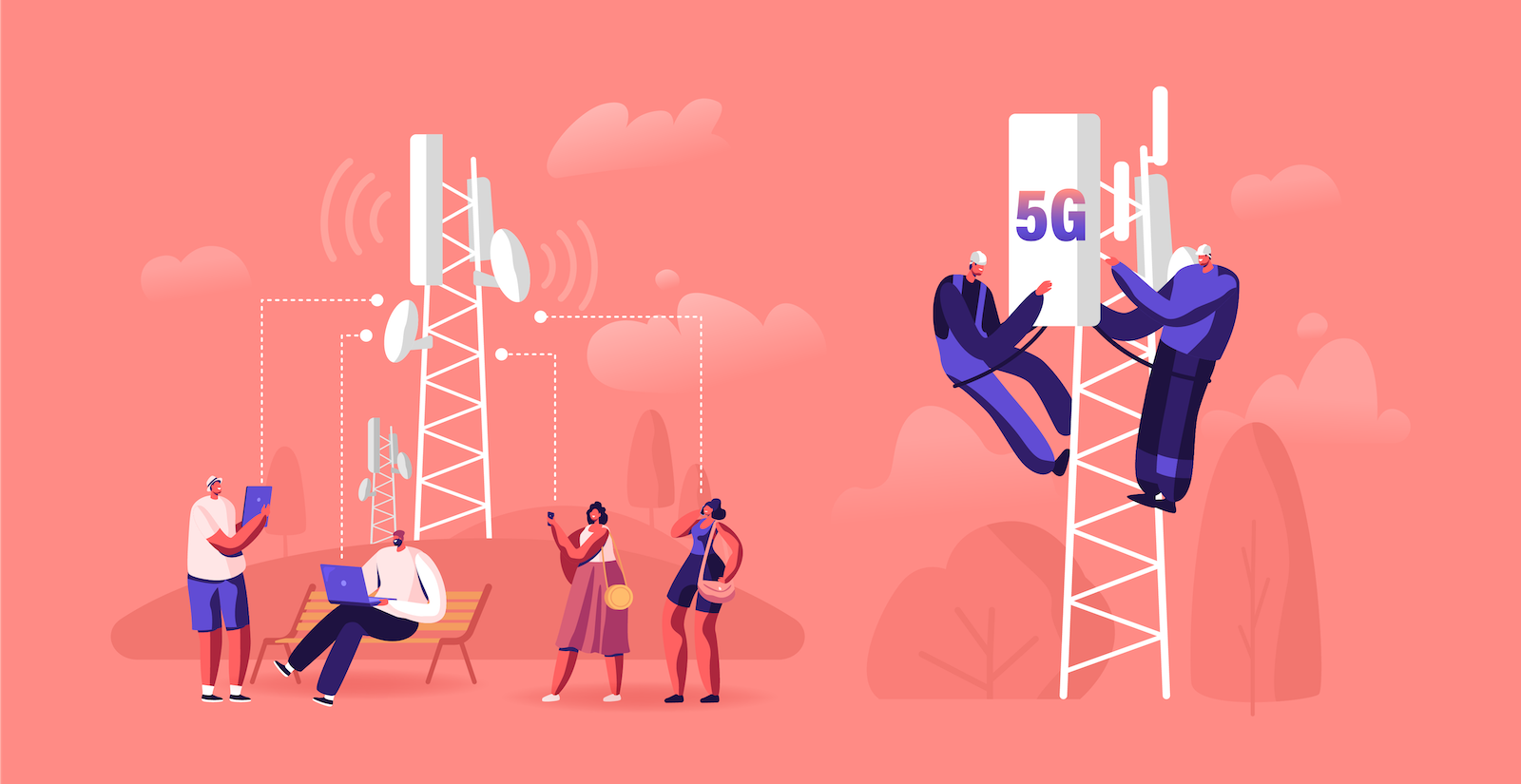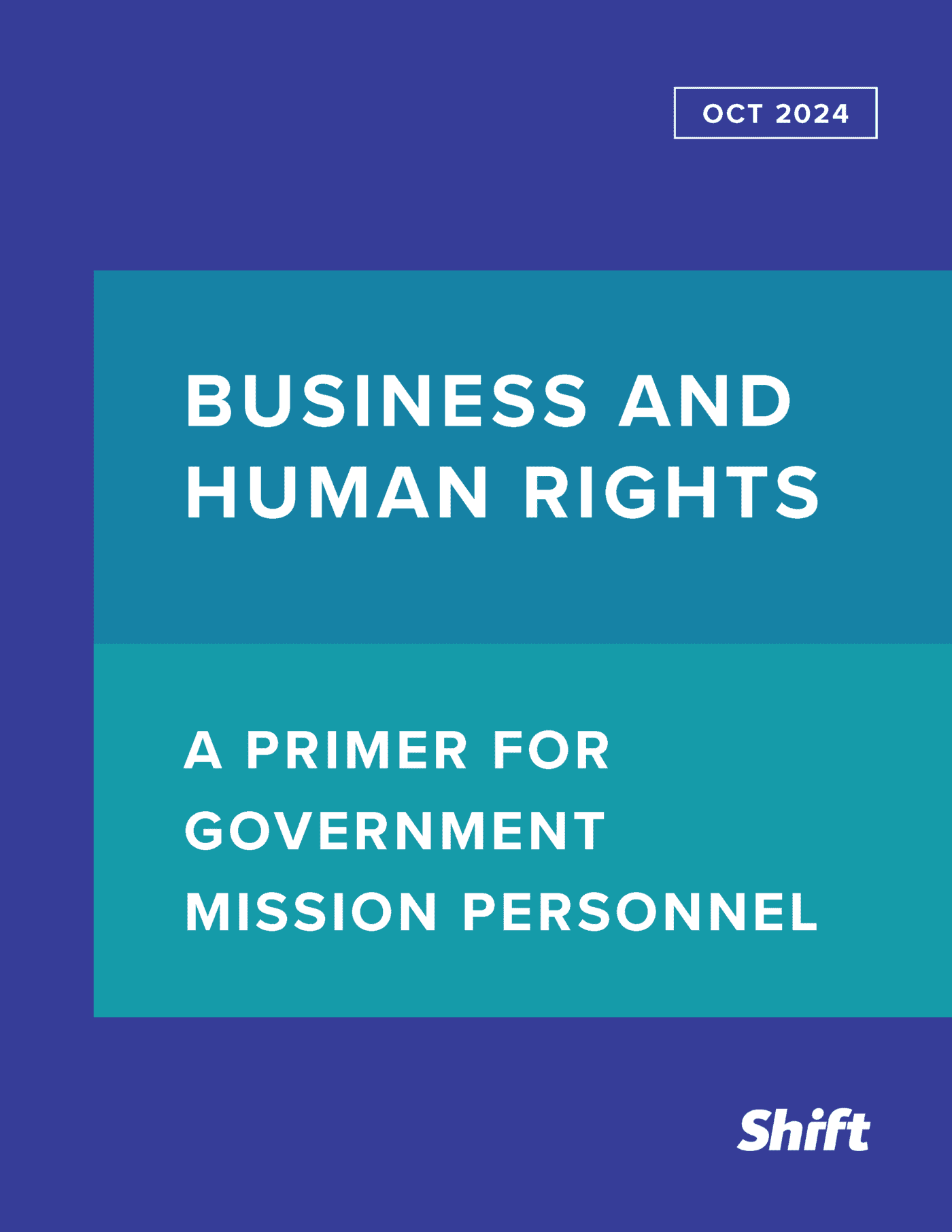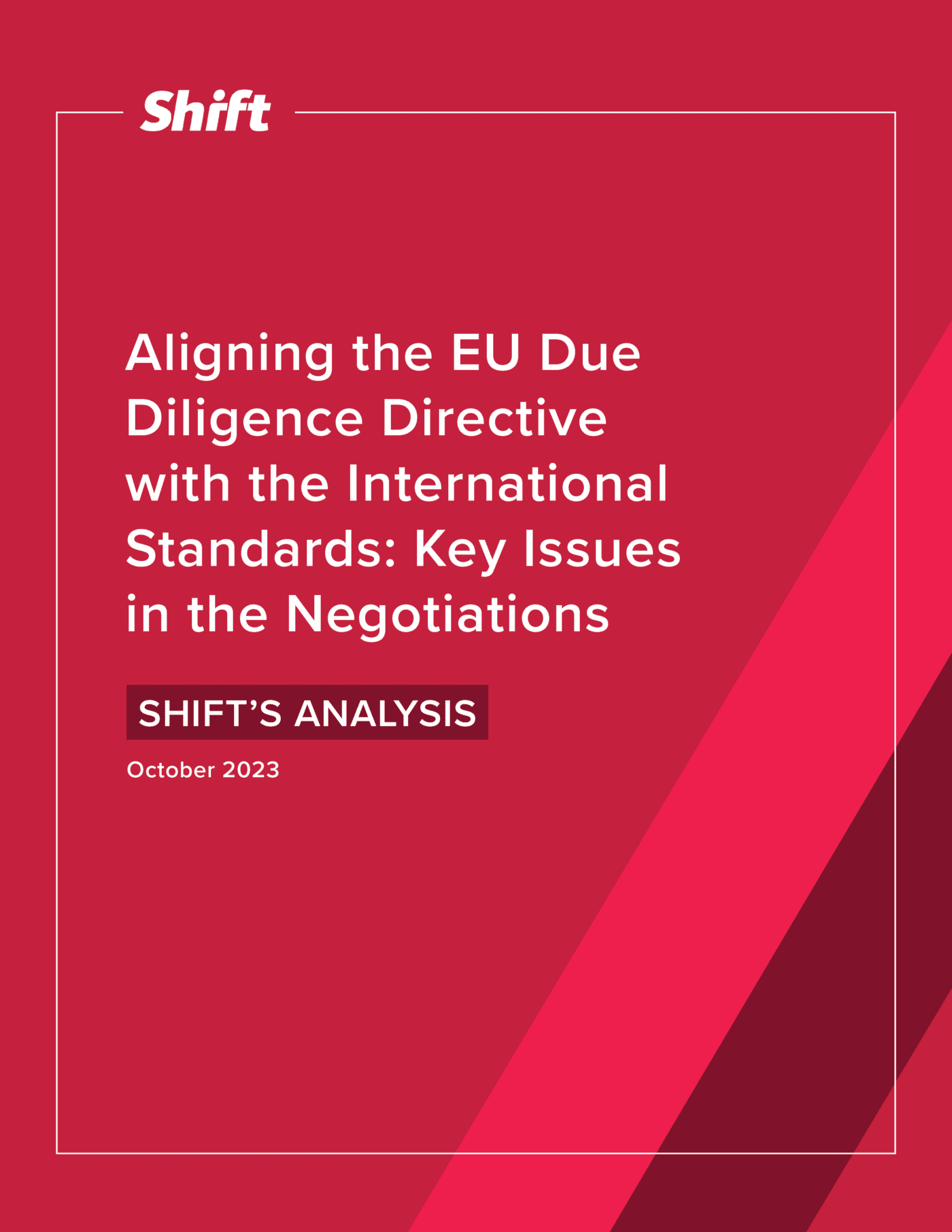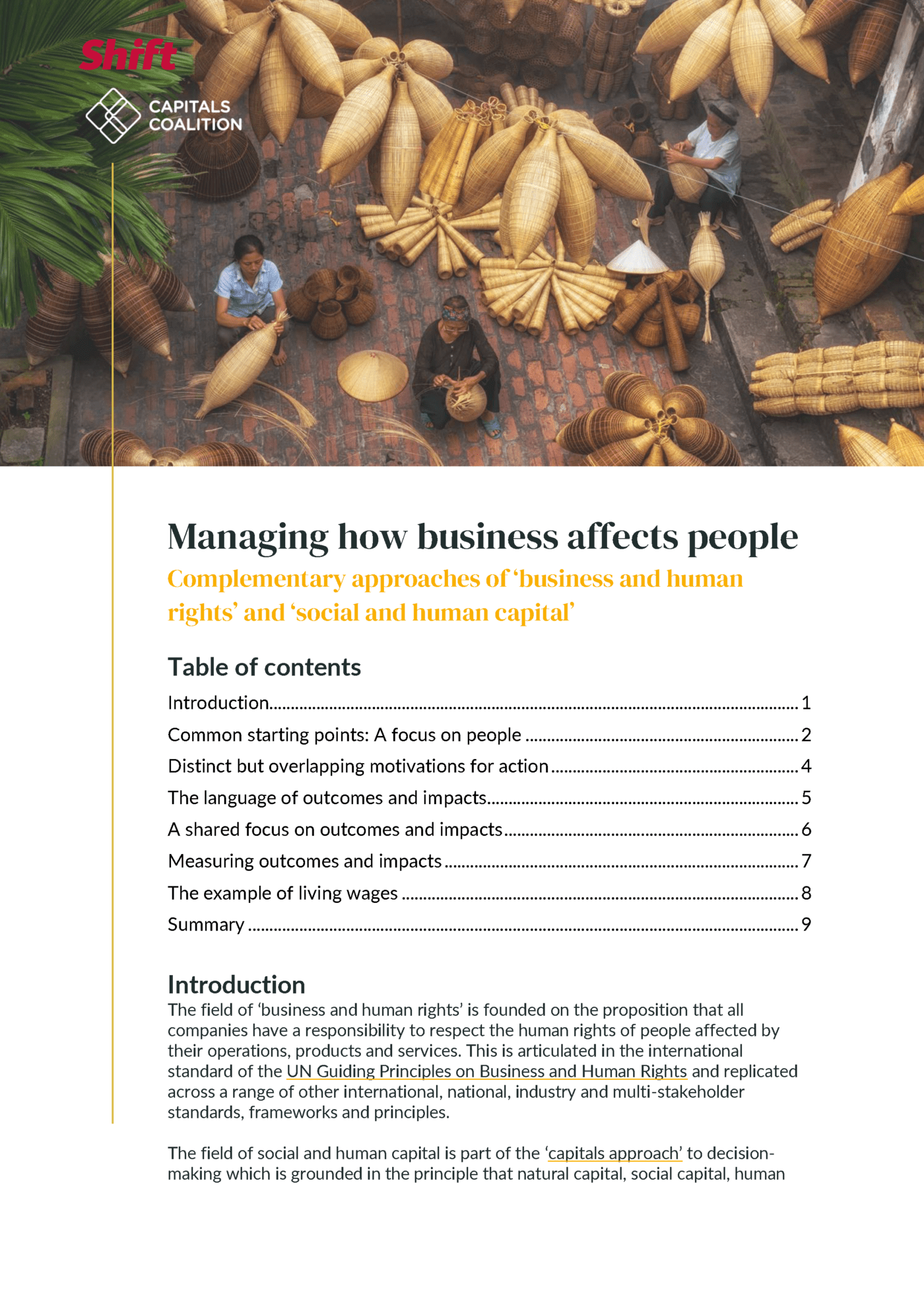When human rights practitioners develop strategies to identify and prevent risk to people, they often feel like their hands are tied: the business is already operating in a certain way, in given markets with different levels of risk, selling a line of products that already exists and partnering with suppliers that have already been decided by other functions. They then spend effort and resources trying to superimpose human rights considerations onto an approach that is already wired to impact people.
But what if that were not the case? What if a company could build human rights risk planning into the design of a new strategy, or soon-to-launch product or business model transformation? Companies could develop a product or roll out a strategy with the necessary safeguards in place to mitigate risks to people, to improve company decision-making, and to potentially re-shape business behaviors. Crucially, an early and full view of the potential impacts across the ecosystem in which a new product, service or strategy sits would also enable a company to bring in the right peers and partners to address them.
This ambition shaped Ericsson’s approach – to examine human rights risks connected to the rollout of their new flagship technology: 5G.
5G is the latest evolution of mobile technology standards. While we’ve become familiar with the iterative release of mobile technology innovations, 5G it not just the “latest version.” It promises to exponentially increase the capacity and efficacy of networks and to enable many new user scenarios and capabilities: data will be king (as opposed to voice and SMS); download and upload speeds will be faster, and devices will connect to wireless networks quicker. 5G will also provide the fuel for the Internet of Things (IoT), Augmented Reality, Virtual Reality and Big Data. In short, it is a quantum leap for the ICT sector and, most likely, for all of us as well.
But news coverage of 5G has not always been as optimistic. The legitimate concerns about the way this new technology may affect us – whether due to privacy breaches, the increased automation of jobs and the need for “just” worker transitions, or the potential for citizen surveillance – have often been obscured by various conspiracy theories, including misleadingly linking cell towers to the coronavirus pandemic.
In this context, ahead of the upcoming large-scale rollout of 5G, Ericsson aimed to encourage an informed discussion of these human rights risks and the company’s involvement with them. Along with Shift, the company embarked on a distinct human rights assessment, looking not at what the impacts were, but at what they could be.
The exercise started with desktop research on the new technology, which led to the mapping of the 5G value chain and then layering on the potential impacts on affected stakeholders whose rights could be at risk. This resulted in a set of salient human rights impacts (those human rights at risk of the most severe negative impacts) that could be tested internally with key company stakeholders in a workshop setting, along with a group of expert, external organizations.
Through that exercise, Ericsson was able to identify risks before they happened. For example:
- Through the value chain, Ericsson identified ways in which privacy could be at risk if the new technology enables apps to gather an exponentially greater amount of data without the knowledge or consent of users, and then sell it to digital advertisers to help them target their messaging more effectively.
- 5G will enable machines to take on more specialized and professional work, potentially impacting significant portions of the working population (blue and white-collar workers alike) in the future. This will require a concerted response by businesses and governments to ensure a ‘just transition’ for workers through new skills development.
- 5G technology is also likely to support increased surveillance capabilities, including more precise geolocation data, which could be misused for illegitimate purposes, such as enabling governments to target specific groups or shutdown networks in more discrete ways.
The identified impacts are not necessarily unique, or indeed solely attributable to 5G. But, the potential for many of the impacts is heightened by the way in which 5G breathes life into a myriad of other emerging technologies such as Artificial Intelligence, Virtual Reality, Augmented Reality and Big Data. By understanding this, Ericsson is better prepared to manage and/or mitigate their occurrence.
Proactive, early-stage risk identification comes with its own challenges, specifically because not all potential risks (or the related unintended consequences) can be anticipated until a product or strategy hits the market. A business will have to fine-tune its approach as roll out continues. However, this effort will allow the company to embed safeguards into the product or strategy, identify channels for leverage with other entities, and be better positioned to engage with stakeholders in future conversations.
So, what can other companies learn?
Taking a pre-emptive approach – while preferable – may not always be possible. Yet, there are important lessons from this exercise that practitioners may want to consider regardless of where their company is on their human rights journey:
- Make the business case for why it is important for human rights to get a seat at the table in product and strategy development and rollout. While practitioners may not be able to turn back time, they can make the case for why it is important to identify risk at an early stage of future product and strategy design. A proactive approach can:
- Enable companies to identify potential impacts before they occur and be better positioned to tackle otherwise unforeseen risks, including risks to the business.
- Help identify systemic issues that are often difficult to see through a more traditional audit.
- Help the company build partnerships at an early stage, positioning it as a convener for partners, peers and other stakeholders to use collaborative leverage when needed.
- Show stakeholders who are reticent that the company understands their concerns and is willing to take action.
- Help the company develop a relationship of trust with civil society organizations and other stakeholders that can be essential in the planning, executing, monitoring and evaluation of human rights actions.
- Assessing risk is the foundation, not an end result. While this sort of approach to identify risk is innovative, it will have limited effect if it is not followed by concrete steps to mitigate the identified risks, and consistent efforts to test whether the initial assessment was accurate, or if there are other risks that arise from the actual rollout of the technology.
Ericsson’s assessment was made publicly available on March 2, 2021 and may be found here.




